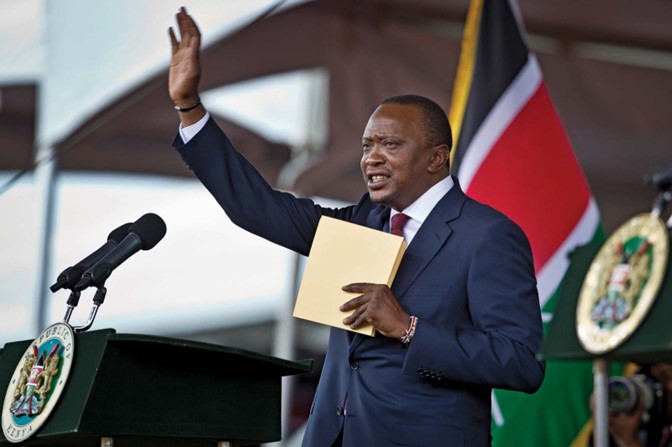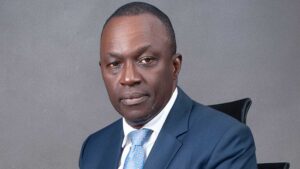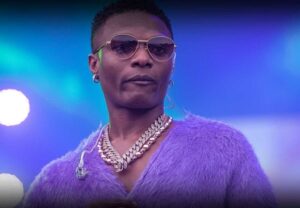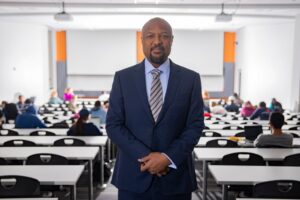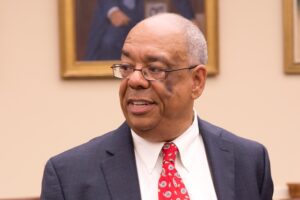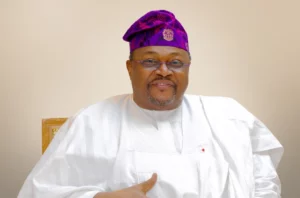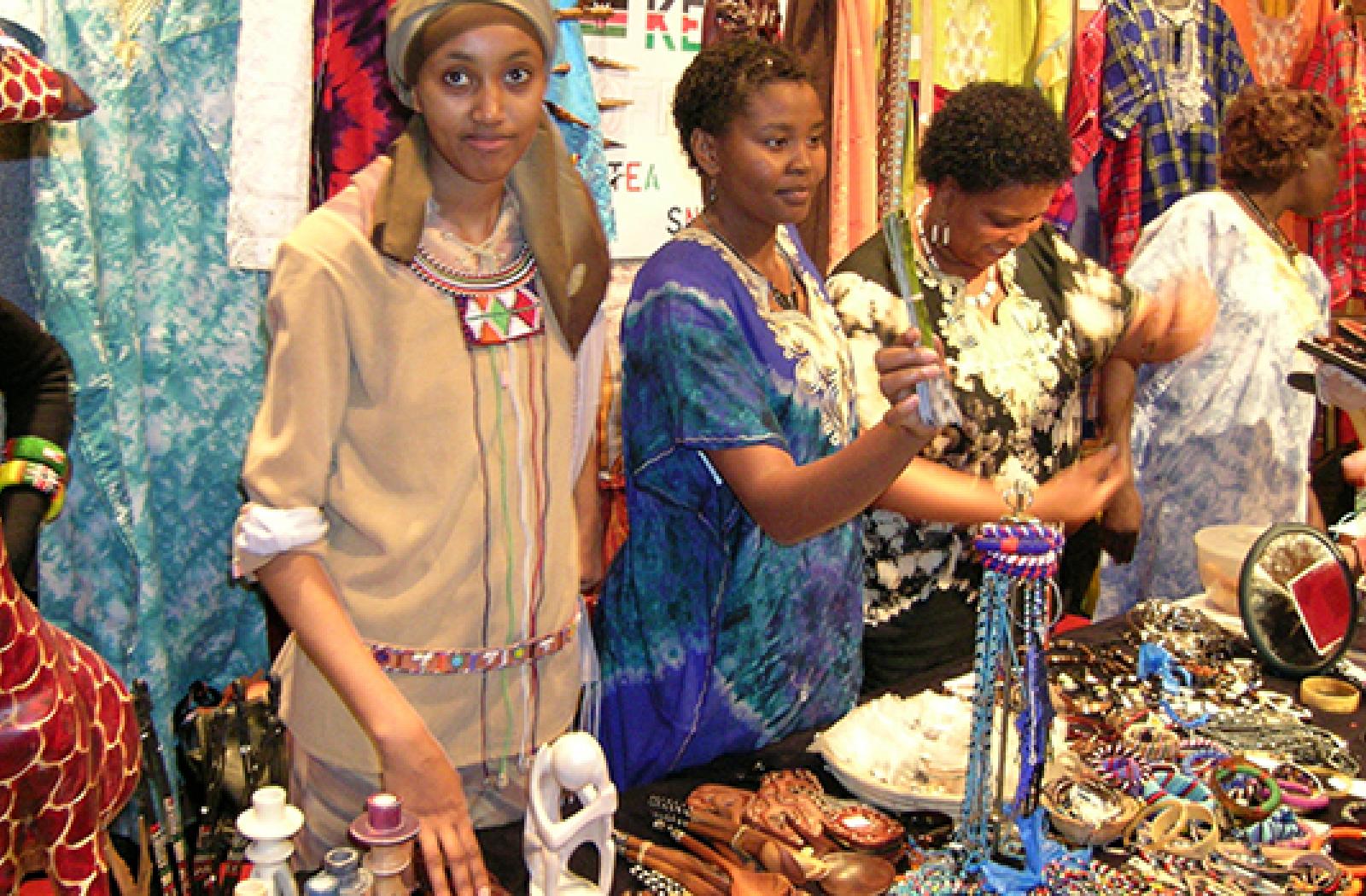Synopsis
Uhuru Kenyatta, the fourth president of Kenya, is a figure with deep roots in his country’s history and development. He is popular for his leadership—a highlight of infrastructural advancements, most notably the Standard Gauge Railway, and for steering Kenya through economic and political challenges. Kenyatta’s presidency reveals his commitment to progress and unity, leaving a legacy that continues to inspire Kenya and the African continent.
Introduction
As a giant strutting across Kenya’s political terrain, his name stands out like a sore thumb in the vast historical stage, his shadow stretching far over the savannahs of development and wealth. He is the scion of a political dynasty, the heir to a legacy of liberation, and the architect of modern Kenya. His name, a clarion call for freedom, resonates through the valleys and cities, stirring the hearts of millions.
His presidency was nothing short of an epic saga, a tale of triumph and tenacity. He wielded the scepter of leadership with the wisdom of Solomon and the courage of a lion, driving forward the chariots of development at breakneck speed. The Standard Gauge Railway, his crowning achievement, stands as a monument to his vision, a steel dragon that breathes life into the nation’s economy.
His deeds are the stuff of legend, etched not in stone, but in the living, beating heart of Kenya. He faced down the gorgons of political strife and the hydra of economic challenges, emerging not just unscathed, but victorious, his gaze ever fixed on the horizon of Kenya’s boundless potential.
To speak of him is to speak of a man who is more than a man; he is the embodiment of Kenya’s indomitable spirit, a beacon of hope and progress, a leader whose legacy will echo through the ages, inspiring generations to come with tales of the man who built a nation, united a people, and carved a future from the bedrock of hope. He is Uhuru Kenyatta, Kenya’s son, Africa’s pride, and the world’s inspiration.
1. Who is Uhuru Kenyatta?
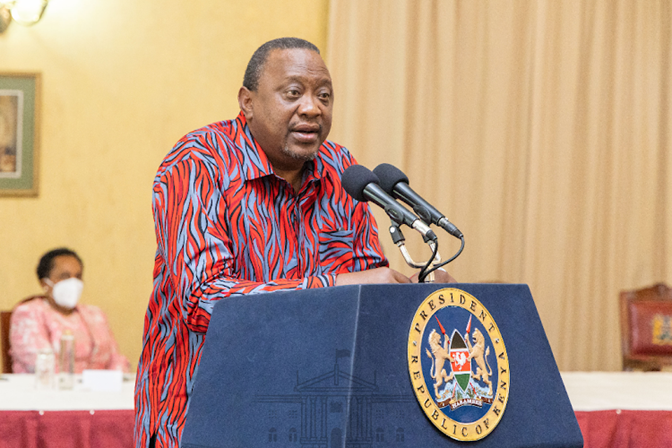
Uhuru Kenyatta is a figure of profound significance in Kenya’s journey through the 21st century. As the son of the nation’s founding father, and first president, Jomo Kenyatta, he was born into a legacy steeped in the struggle for independence and the dreams of a free Kenya. His name, Uhuru, Swahili for “freedom,” was a beacon that guided him as he navigated the complex waters of politics, eventually leading him to the presidency. His leadership was not just a position held but an embrace of a mission to propel Kenya towards greater heights of development and unity.
His presidency—on a canvas painted the aspirations of the Kenyan people in bold strokes, championing Infrastructure projects like the Standard Gauge Railway; the arteries through which the lifeblood of progress flowed, connecting people, cities, and futures. Kenyatta’s vision was clear: to build a Kenya that is not only economically robust but socially cohesive, a nation that celebrates diversity and every citizen has the opportunity to thrive.
Uhuru Kenyatta, born on October 26, 1961, is a prominent figure in Kenyan politics whose path from a businessman to the presidency is full of significant political milestones and challenges. As the fourth president of Kenya, serving from 2013 to 2022, Kenyatta’s tenure has its accolades in the efforts to steer the nation through economic development and political stability. His leadership style and policies are constant subjects of both praise and criticism, reflecting the complexities of governance in a diverse and rapidly changing country
2. What Makes Uhuru Kenyatta So Special?
Uhuru Kenyatta is not merely a man but a living legend, whose very essence is interwoven with the soul of Kenya. He is the phoenix that rose from the ashes of colonialism, carrying the fire of freedom in his name and igniting the spirit of sovereignty in his people. His presidency was an odyssey, a Herculean saga that saw him wrestle with the titans of economic stagnation and political discord, emerging victorious with the golden fleece of progress and unity for his nation.
In the pantheon of modern leaders, Kenyatta stands as Zeus, wielding thunderbolts of infrastructural marvels that have electrified the Kenyan landscape. The Standard Gauge Railway, his Olympian chariot, has raced Kenya into a future where horizons are broad and possibilities, limitless. His governance, a symphony of traditional wisdom and innovative strategy, played in perfect harmony to the rhythm of Kenya’s heartbeat.
To speak of Uhuru Kenyatta is to speak of a visionary with eagle eyes seeing far beyond the present, a strategist whose moves on the political chessboard are always two steps ahead. He is the embodiment of Kenya’s pride, the lion whose roar echoes across the savannahs of progress, inspiring a continent to rise, unite, and conquer the future. Kenyatta’s legacy is not etched in stone but in the hearts of his people, a true witness to the indomitable will and spirit of Kenya. He is special not because he was a president, but because he was the president who became the pulse of Kenya, the architect of dreams, and the harbinger of a new dawn for Africa.
Kenyatta’s special blend of leadership, vision, and commitment to his country’s advancement makes him a standout figure in African politics.
3. What Does Uhuru Kenyatta Care About?
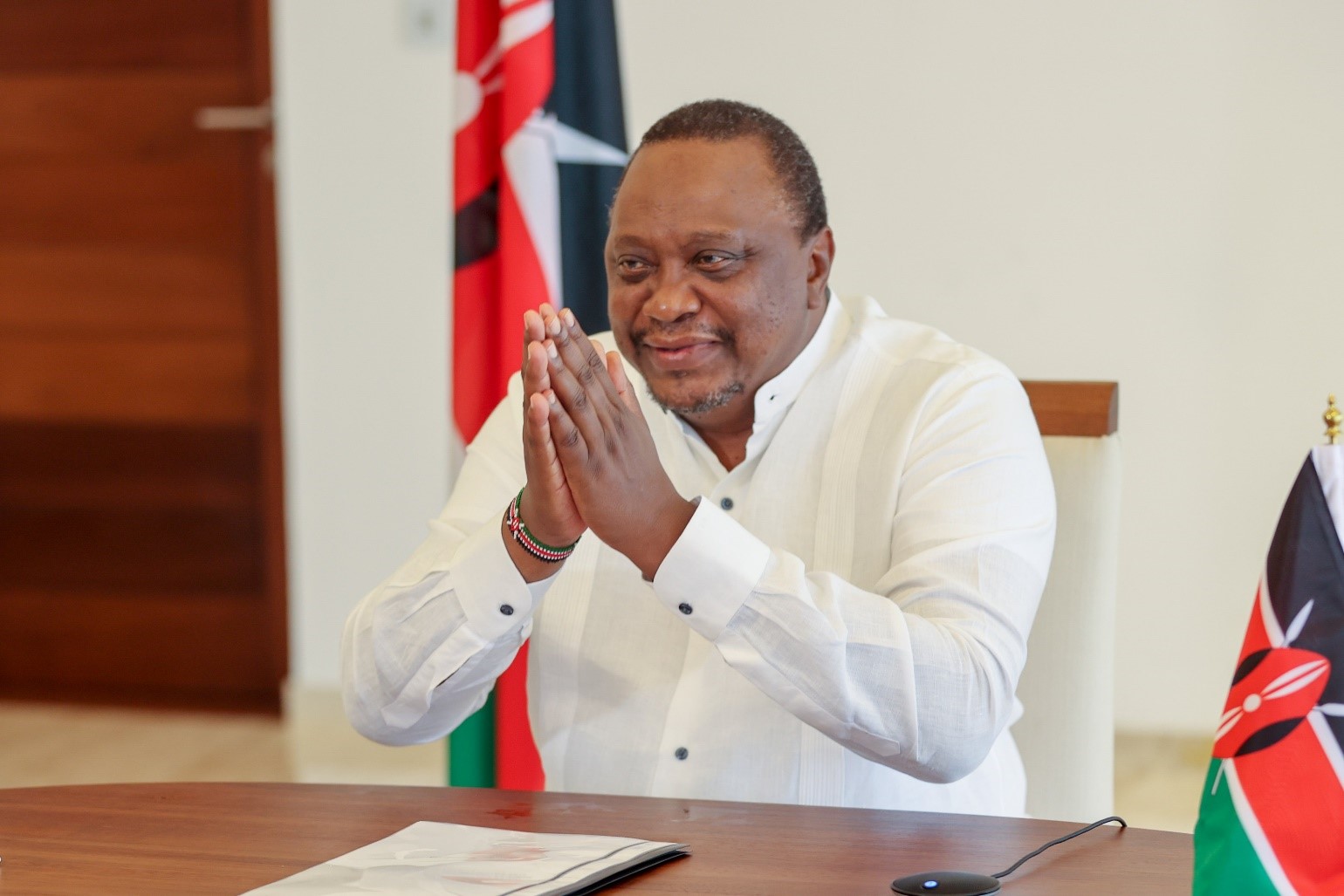
Uhuru Kenyatta’s passion for advancing Kenya’s status both domestically and globally, striving to leave a legacy of a unified, progressive, and economically stable nation reflect in his political career and presidential tenure through several key impact areas like:
- Economic Growth: Kenyatta has been a proponent of economic policies aimed at boosting Kenya’s growth, focusing on infrastructure development, such as the Standard Gauge Railway, to improve connectivity and trade.
- National Unity: Coming from a background of significant ethnic diversity in Kenya, he has emphasized the importance of national cohesion and unity, often speaking against tribalism and for inclusivity.
- International Relations: Kenyatta has worked to position Kenya as a key player in international affairs, fostering relationships with other nations and international organizations to enhance trade, security, and diplomatic ties.
4. What Are Uhuru Kenyatta’s Greatest Deeds?
Uhuru Kenyatta’s presidency is distinguished by a series of impactful achievements that have shaped Kenya’s development trajectory. Here are a few of his most notable deeds:
- Revolutionizing Transportation and Trade History cannot forget Kenyatta’s administration for its ambitious infrastructure projects, particularly the Standard Gauge Railway (SGR). This monumental project has transformed transportation in Kenya, enhancing connectivity and facilitating trade not just within the country but also with its neighbors. The Nairobi Expressway and the Lamu Port are other significant infrastructural feats that have bolstered Kenya’s position as a regional economic hub.
- Accelerating Economic Development Under Kenyatta’s leadership, Kenya experienced a surge in economic growth. His government’s commitment to building over 11,000km of tarmac roads is a testament to this, significantly improving the nation’s transport network and boosting commerce. These developments have been pivotal in driving Kenya’s economic expansion and modernization.
- Advancing Education and Skills Training Kenyatta placed a strong emphasis on education, particularly in higher education and technical and vocational training (TVET). The remarkable growth in TVET institutions from 52 to 238 during his presidency reflects his dedication to equipping Kenyan youth with the skills necessary for the modern workforce, thereby enhancing their employability and contributing to the nation’s socio-economic development.
- Implementing Land Reforms Addressing historical land issues, Kenyatta’s government undertook significant reforms in the land sector. The digitization of the lands registry was a critical step in combating fraud and ensuring the integrity of land ownership, which is crucial for the stability and prosperity of any nation.
5. What Has Uhuru Kenyatta Faced as Challenges?
Come to think of the multifaceted challenges Uhuru Kenyatta encountered. Some of them are :
- Electoral Turmoil and Political Reconciliation The political landscape during Kenyatta’s presidency was fraught with tension, particularly surrounding the 2017 election. The Supreme Court’s nullification of the initial results led to a re-run, which was boycotted by the opposition. This period of uncertainty was eventually mitigated by the “handshake” agreement with Raila Odinga in 2018, which sought to unify the nation but also resulted in internal party conflicts.
- National Security Concerns Kenyatta’s leadership was tested by security threats, most notably from Islamist militant attacks. These incidents required decisive action to ensure the safety of Kenyan citizens and maintain the country’s stability, highlighting the ongoing struggle against terrorism.
- Economic Challenges Amid Global Crises The Kenyan economy faced significant hurdles due to external factors such as the Covid-19 pandemic and the Russia-Ukraine conflict. These events contributed to rising living costs and economic strain, necessitating careful economic management and policy adjustments to navigate the resultant fiscal challenges.
- Persistent Corruption Issues Despite Kenyatta’s commitment to combating corruption, it remained a pervasive issue throughout his presidency. Efforts to promote integrity and transparency were continuously undermined by corruption, posing a challenge to achieving a more accountable governance structure.
6. What Keeps Uhuru Kenyatta Motivated?
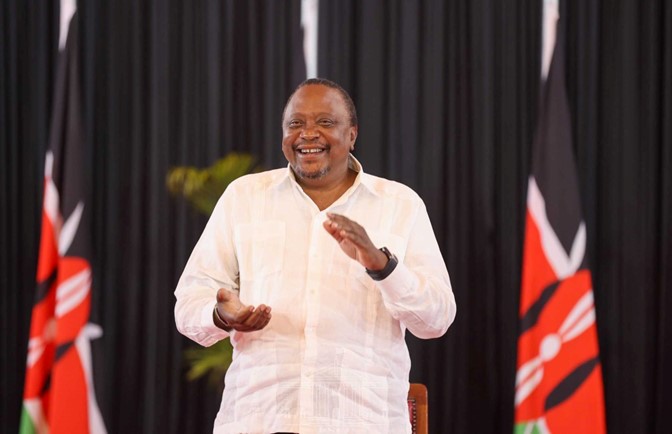
Take a look at Kenyatta’s public services and statements—it points out that Uhuru Kenyatta’s motivation as a leader seems to find its roots in a commitment to his nation’s welfare and prosperity. His desire to honor and build upon the legacy of his father, Jomo Kenyatta, Kenya’s first president, and to fulfil his vision for a strong, united Kenya are strong motivating factors for him. Kenyatta consistently demonstrates a focus on transformative projects, such as the Standard Gauge Railway, which suggests a drive to leave a tangible mark on Kenya’s development.
His initiatives in education and infrastructure indicate a forward-looking approach, aiming to equip future generations with the tools for success. This long-term perspective, plus a sense of responsibility to uplift the Kenyan people, appears to guide his leadership. Moreover, his efforts to promote national unity and to position Kenya as a key player on the international stage reflect a profound understanding of the importance of solidarity and global cooperation for the nation’s growth.
In essence, Uhuru Kenyatta’s motivation may stem from a blend of personal legacy, national pride, and a strategic vision for Kenya’s future. His actions suggest that he has a strong belief that through dedicated leadership, he can contribute significantly to shaping a prosperous and cohesive Kenya that stands tall in the global community.
7. Why Is Uhuru Kenyatta Such a Role Model?
Uhuru Kenyatta is often seen as a role model for several reasons:
- Leadership Legacy: As the son of Jomo Kenyatta, Kenya’s first president, Uhuru carries a legacy that inspires many. His rise to the presidency is seen as a continuation of his father’s vision for Kenya, embodying the ideals of leadership and commitment to national progress.
- Developmental Focus: His focus on infrastructure, particularly projects like the Standard Gauge Railway, showcases his dedication to Kenya’s modernization and economic growth. This has set a precedent for future leaders in terms of prioritizing development and has made him a figure of aspiration.
- Resilience in Governance: Kenyatta’s ability to navigate political challenges, including election disputes and security threats, demonstrates a resilience that is admirable. His efforts to maintain stability and promote unity in the face of adversity are qualities that many look up to.
8. What Is Uhuru Kenyatta Currently Working On?
Here are some of Uhuru Kenyatta’s present key projects and initiatives:
- Nairobi-Mombasa Standard Gauge Railway (SGR) The SGR project is a cornerstone of Kenyatta’s infrastructure legacy. This modern railway system, spanning 472 kilometers, was inaugurated to enhance the movement of goods and passengers between Kenya’s capital and its principal port. It represents a significant leap forward in the country’s efforts to improve its transport sector and stimulate economic activity.
- Nairobi Expressway Addressing the notorious traffic congestion of Nairobi, the Nairobi Expressway is a 27.1-kilometer toll road designed to provide a swift transit route through the city. This project is expected to drastically reduce travel times, thereby improving the quality of life for commuters and enhancing the efficiency of urban transportation.
- Competency-Based Curriculum (CBC) In the education sector, Kenyatta introduced the CBC to replace the previous 8-4-4 system. This new curriculum focuses on developing specific competencies in learners, such as critical thinking and problem-solving skills, preparing them for the demands of the contemporary job market and higher education.
- Lamu Port and LAPSSET Corridor The Lamu Port is part of the ambitious LAPSSET corridor project, which aims to connect Kenya with South Sudan and Ethiopia, creating a new trade axis in East Africa. The port is expected to play a crucial role in boosting regional trade and enhancing Kenya’s strategic importance in international shipping.
- Affordable Housing Project Kenyatta’s Affordable Housing Project seeks to tackle the housing deficit in Kenya by providing cost-effective housing solutions. This initiative is part of the ‘Big Four Agenda’ and aims to deliver thousands of housing units to low and middle-income families, improving their access to safe and affordable homes.
9. What Could Slow Uhuru Kenyatta Down?
Take a look at some of the potential obstacles that could slow down President Uhuru Kenyatta’s progress on his projects:
- Political Dynamics and Internal Party Conflicts The intricate political environment of Kenya presents a significant challenge. The alliance formed through the “handshake” with Raila Odinga, while initially a symbol of political reconciliation, has led to unforeseen internal party conflicts. These conflicts can create a diversion from the government’s development goals, as political capital and resources might be redirected towards resolving internal disputes and maintaining coalition harmony.
- National Security and Resource Allocation Security concerns, particularly those arising from threats by extremist groups, pose a serious challenge to national stability and progress. Such security threats demand immediate and resource-intensive responses, which can lead to a reallocation of funds and focus away from developmental projects. Ensuring the safety of citizens is paramount, but it can slow the momentum of ongoing infrastructure and economic initiatives.
- Economic Constraints and Budgetary Limitations The Kenyan economy, like many others, has been impacted by global events such as the Covid-19 pandemic and the Russia-Ukraine conflict. These events have led to increased living costs and economic uncertainty, which can constrain the government’s budget and potentially delay the implementation of key projects. Economic resilience is crucial, but fiscal pressures can impede the pace at which development projects are carried out.
- Corruption and Efficiency in Governance Corruption remains one of the most pervasive challenges in many governance systems, including Kenya’s. Despite concerted efforts to combat corruption, it continues to be an obstacle that can undermine the efficient use of resources and the timely completion of projects. Tackling corruption is essential for ensuring that development initiatives are not only initiated but also brought to fruition without undue delay or waste.
10. What Can You Learn From Uhuru Kenyatta?
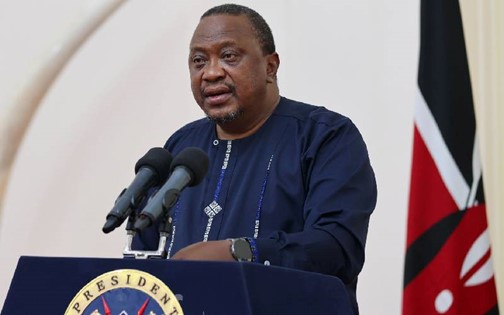
Observe the key highlights of Uhuru Kenyatta’s tenure as President of Kenya, and learn:
- Visionary Leadership: Kenyatta’s focus on transformative projects like the Standard Gauge Railway exemplifies the importance of having a long-term vision. It shows how a leader can set ambitious goals and work persistently towards achieving them.
- Resilience: His ability to withstand political and economic challenges highlights the need for resilience. Learning to stay the course despite obstacles is a crucial skill in any endeavor.
- Embracing Diversity: Kenyatta’s efforts to promote unity in a diverse nation underscore the value of embracing different cultures and perspectives, which can lead to a more harmonious and productive environment.
- Legacy Mindset: His dedication to projects that have a lasting impact teaches the importance of building a legacy. It’s about creating something that not only serves the present but also benefits future generations.
Pro Tips
Here are some useful pro tips for you, from Uhuru Kenyatta’s life and work:
- Embrace Diversity: Cultivate an environment where different cultures and perspectives are valued, leading to richer, more inclusive outcomes.
- Pursue Visionary Goals: Set ambitious, long-term objectives that can drive significant change and leave a lasting impact on your community or organization.
- Foster Unity: Work towards creating unity in your team or community, recognizing that cohesion is key to overcoming challenges and achieving common goals.
- Build Resilience: Develop the ability to withstand setbacks and persist through challenges, maintaining focus on your objectives.
- Champion Progress: Advocate for and implement initiatives that promote development and modernization, ensuring that your actions contribute to the advancement of the larger society.
- Leave a Legacy: Aim to leave a positive mark through your work that will benefit future generations and be remembered long after your tenure.
Summary
Uhuru Kenyatta, a symbol of Kenya’s enduring spirit, rose from the son of the nation’s first president to its fourth, championing economic growth and infrastructural development. His presidency, marked by both praise and critique, reflects the complexities of leading a diverse nation through times of change. Kenyatta’s legacy, defined by his efforts to unify and progress Kenya, resonates as a testament to his vision and leadership within Africa and beyond.


